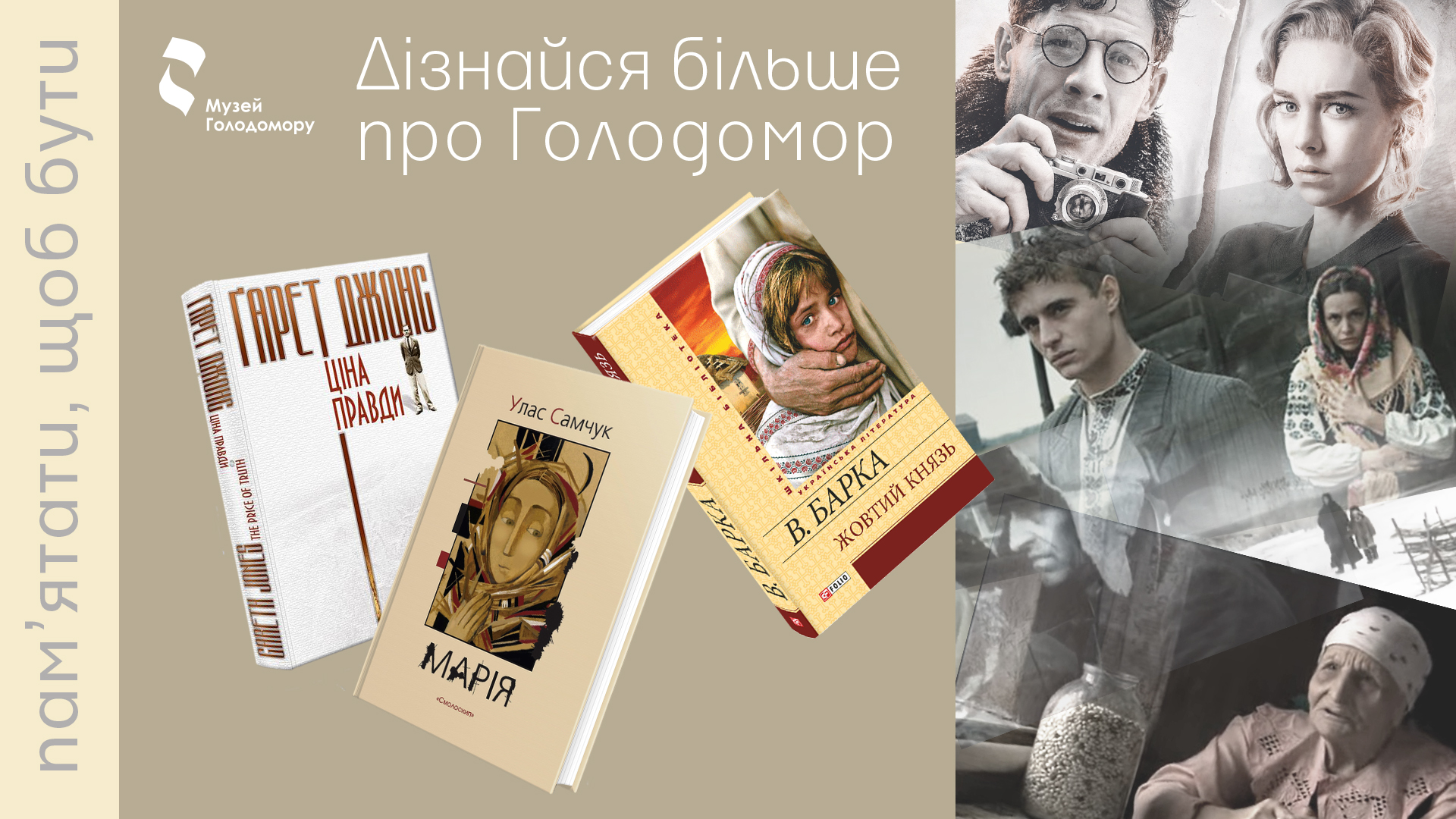What to Watch and Read during the Quarantine?
30 March 2020
While the Holodomor Museum is closed, our team shares useful resources to explore the topic of genocide of Ukrainians. We believe that regardless of external factors, time at home can be spent with benefits.
Follow the rules of self-isolation and hygiene, keep calm and develop yourself.
Below you can see a compilation of books, films, and lectures that will inform you about the Holodomor, its background and implications. This is an important story that everyone should know.
?Books:
- Gareth Jones. Price of Truth (2019) — selected articles and chronicles of the life and memory of British journalist Gareth Jones. The book was published in two languages in Ukraine on the initiative of Maryna Zhenchenko and Yaroslava Prykhoda;
- Maria (1933) — Ulas Samchuk reports the Holodomor as an event of apocalyptic scale. The style of this text is epic, close to chronicles or sacred books;
- The Yellow Prince (1953) — another large prose text about the Holodomor. Vasyl Barka created a symbolic image of the Yellow Prince, the demon of evil, who carries destruction, devastation, torment and death;
- The Red Apocalypse: Through the Holodomor and Dekulakization (2012) — the manuscripts of Dmitry Goychenko (1903–1993), which were accidentally discovered in 1994 in the San Francisco emigrant archive (USA) and are unique testimonies of the terrible times of Soviet collectivization;
- Harvest of Sorrow: Soviet Collectivization and Holodomor (1986) — first large historical study of the Holodomor written by Anglo-American historian Robert Conquest.
Movies:
- “Mr. Jones” (2019) — historical thriller about journalst Gareth Jones, who wrote abou the Holodomor in spite of all circumstances. The movie tells about overing and silencing of the Holodomor by the Communist regime;
- “Bitter Harvest” (2017) — Canadian movie about a love story during the Holodomor. It is the first English-language feature film about 1932–33;;
- “Alive” (2008) — Ukrainian documentary directed by Sehii Bukovskyi, where stories of Holodomor witnesses are woven into the plot of world events of the 1930s;
- “Ukrainian Night of 33” (1994) — a series of documentaries, which include “Fear”, “Horror”, “Guillotine”, “The Case of Hrushevsky”;
- “Famine-33” (1991) — a movie made on the basis of Vasyl Barka’s novel The Yellow Prince. It is the first feature film on the crime of the Stalinist totalitarian regime against Ukrainians;
- «33: Witnesses’ Testimonies» (1991) — the first documentary on the Holodomor in Ukraine;
- “Harvest of Despair” (1989) — Canadan historical documentary about the Holodomor;
- “Child 44” (2015) — forbidden in Russian Federation, the movie tells about 1953. Protagonist, Leo Demidov, who was rised in the orphanag and survived the Holodomor, was the one to pant the Soviet fag over Reichstag. He also works for MGB and kills the “enemies of the nation”.
Online lectures:
- Volodymyr Serhiichuk on the mechanism of the Holodomor and losses of Ukrainian nation: http://bit.ly/33uPaIx
- Historin Roman Podkur on uprisings before and during the Holodomor-genocide: http://bit.ly/2IY8Fji
- Valerii Udovysheno on the criminal case No. 475 on genocide in Ukraine in 1932–33: http://bit.ly/33DofL3
- Holodomor-33: History of the Crime: http://bit.ly/2WoH6I7
- Lectur by ethnologist Iryna Batyrieva “Visual Images in the memories of the 1932–1933 Holodomor Eyewitnesses”: http://bit.ly/2TZ17TH
